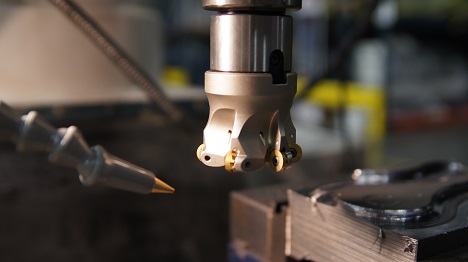Gripping Torque: Is This the Right Way to Measure Toolholder Effectiveness?
Gripping Torque: Is This the Right Way to Measure Toolholder Effectiveness?:
Part 1 of a 2 Part Series

The widespread belief in the machining industry is that gripping torque is the singular element that speaks for how secure a tool is in the toolholder. The theory is that the higher the torque, the less likely the tool will pull out. But is magnitude of gripping torque really the singular metric that guarantees tool security, and ultimately productivity?
In a series of articles, we will analyze the effectiveness of gripping torque as a measurement tool, how it works (or doesn’t) in practical applications, look at friction fit and other methods of holding tools and suggest a better way of evaluating tool retention.
What is gripping torque?
Gripping torque is the amount of clamping force on an object being held. In manufacturing, it is frequently used as a means of differentiating holding systems. In theory, the higher the gripping torque specification, the less likely tool pullout will occur. In many cases this is true, but not 100% of the time.
When people talk about gripping torque, they are mainly thinking about tool holding methods that involve a “friction fit” between the tool and toolholder. This involves applying pressure to minutely collapse portions of the toolholder’s internal diameter to clamp around a round tool shank. Milling chucks, collet chucks, hydraulic chucks and shrink fit holders all incorporate this technique to various degrees.
Friction fit evolved because it did traditionally provide better runout accuracy over older systems like sidelock end mill chucks. Gripping torque became the evaluation criteria of choice to give operators a way to differentiate between toolholders using friction fit clamping.
Gripping torque is now accepted as one of the "Big Four" standards of tool/toolholder effectiveness, along with 1) rigidity, 2) accuracy, and 3) balance. But does it really deserve its place or is it time to examine the relationship between the tool and toolholder more closely in today’s increasingly more aggressive machining world?
Increasing Security
While useful as a gauge for comparison, and indeed a part of tool security, no amount of gripping torque will 100% guarantee that a tool won’t pull out of the holder. This is due to the ever-increasing forces cutting tools are being subjected to via enhanced machining techniques. For this reason, based on years of developing and manufacturing toolholders, we propose that gripping torque should be replaced with “security” as the forth standard of toolholder effectiveness. “Tool security” within the toolholder is actually a better and more accurate description of what shop operators are looking for (along with rigidity, accuracy and balance) to maximize the productivity in their shops.
Compared to tool security, which can be measured in microns, gripping torque is imprecise as it relates to the holders ability to retain the tool 100% of the time. With the onset of faster machine spindles and more aggressive roughing toolpath strategies (like full radial engagement trochoidal milling), the problem of tool pullout is emerging again in the market as a major issue. The incredible cutting forces seen in certain scenarios has exposed the limitations of even the best friction fit clamping systems.
Litmus Test: If gripping torque guaranteed 100% tool security, why are 100-year old Weldon/sidelock chucks (with poor TIR and balance accuracy) still being used in today’s modern machining world?
If your shop is doing aggressive cutting or roughing, and is using end mill style holders, you have likely experienced tool security issues at some point. In our next article, we will look at this form fit technology and how other technologies have evolved in an effort to address the aforementioned attributes of rigidity, accuracy, balance and tool security.
- When people talk about gripping torque, they are mainly thinking about tool holding methods that involve a “friction fit” between the tool and toolholder.
- Gripping torque became the evaluation criteria of choice to give operators a way to differentiate between toolholders using friction fit clamping.
- Gripping torque will not guarantee a tool won't pull out of the holder because of the ever increasing forces cutting tolls are being subjected to with enhancements in techniques.
Previously featured on Haimer-USA.com




Talk to Us!
Leave a reply
Your email address will not be published. Required fields are marked *